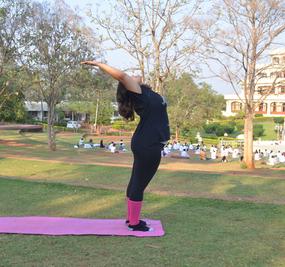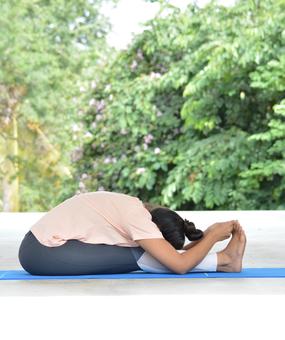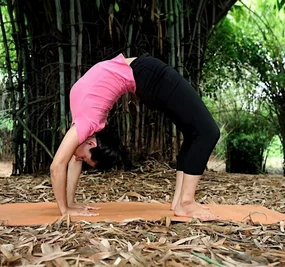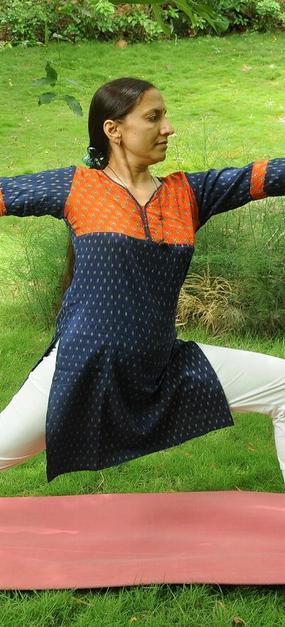How to do Prasarita Padahastasana
- Stand erect with your feet 3-4 feet apart, balanced and firmly grounded. Breathe gentle deep breaths.
- Inhale, lengthen the spine, stretch arms overhead.
- Exhale, bend forward from the hip joints, keeping the spine straight.
- Place hands on the floor, under the shoulders. Inhale, exhale gentle deep breaths.
- Lifting the hips up, bend further as you breath out to bring the head toward the floor in between the hands.
- Separate the thighs. If you are stable, you can separate your feet further apart, maintaining the balance and firmness.
- Breathing out, press your hands firmly on the floor to deepen the bend. If your hands reach the feet, get hold of your big toes and pull on them to get a deeper bend.
- Inhale, stretch the arms to the front and lift upslowly.
- Exhale, bring the arms to the sides.
Benefits of the Prasarita Padahastasana
- Strengthens the legs and feet.
- Lengthens the spine.
- Stretches the hamstrings.
- Strengthens the abdomen.
Contraindications
People suffering from lower back pain should avoid stretching to the fullest as it might aggregate the condition.
All Yoga Poses Previous yoga pose: Veerabhadrasana Next yoga pose: VrikshasanaFAQ’s about Prasarita Padahastasana (Standing Forward Bend)
Benefits of Prasarita Padahastasana: It strengthens the legs and feet. It lengthens the spine. It stretches the hamstrings. It strengthens the abdomen and joints.
People suffering from lower back pain should avoid stretching the maximum as it aggravates the condition.
Yes, Prasarita Padottanasana is a hip opener as the asana involves opening up the legs. All the asanas in which feet are wide apart are easier for opening the hips. The name of the asana also suggests that Prasarita, meaning outstretched, pada, meaning foot, ut, meaning intense, tan, meaning to stretch or extend, and asana, meaning pose.















